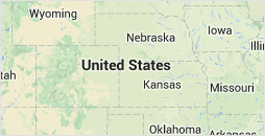Emily Clarke
PHONE NUMBER : -----
Map

Understanding What Image Outliers Are in Computer Vision
Computer vision is a technology that benefits many industries. From healthcare imaging to autonomous transportation, it's an innovation that will continue to push the boundaries of what technology can do. These systems can view and interpret visual inputs, working similarly to the human eye and brain.
Before deployment, a computer vision system must go through extensive training. This process enables computers to learn what it needs to identify, improving their intelligence and accuracy over time. Using an open source learning platform for computer vision is an essential step that vastly improves efficiency. But what happens if a computer vision system detects something it's not trained to see?
How Computer Vision Works
To understand what image outliers are, you must have a basic grasp of how computer vision works. Simply put, systems learn how to distinguish previously determined classes. When it views an image, the computer separates pixels and places them into classes to identify what it sees.
Image outliers refer to the pixels or objects substantially different from the rest of the data computer vision systems collect. For example, a system might try to identify an object by referring to its size, shape or color. To prepare it for that task, you may use an open source learning platform for computer vision to train it in those specific classes. Anything that doesn't belong to the classes the system learns to identify is an image outlier.
Image Outlier Detection
Image outliers can lead to performance issues within the computer vision model. The predictions and estimation labels it applies are often incorrect, resulting in accuracy problems. However, many computer vision systems employ image outlier detection.
With detection features, systems can identify and remove outliers. It learns how to separate the outliers and prevent them from causing reliability issues. The result is more accurate data. Image outlier detection is often used to circumvent common errors caused by noise or accuracy problems in image processing. It can also prevent trouble when computer vision systems interpret visual data with unusual objects.
Author Resource:-
Emily Clarke writes about tech for automated annotation, AI labeling, data evaluation and more. You can find her thoughts at learning platform blog.
